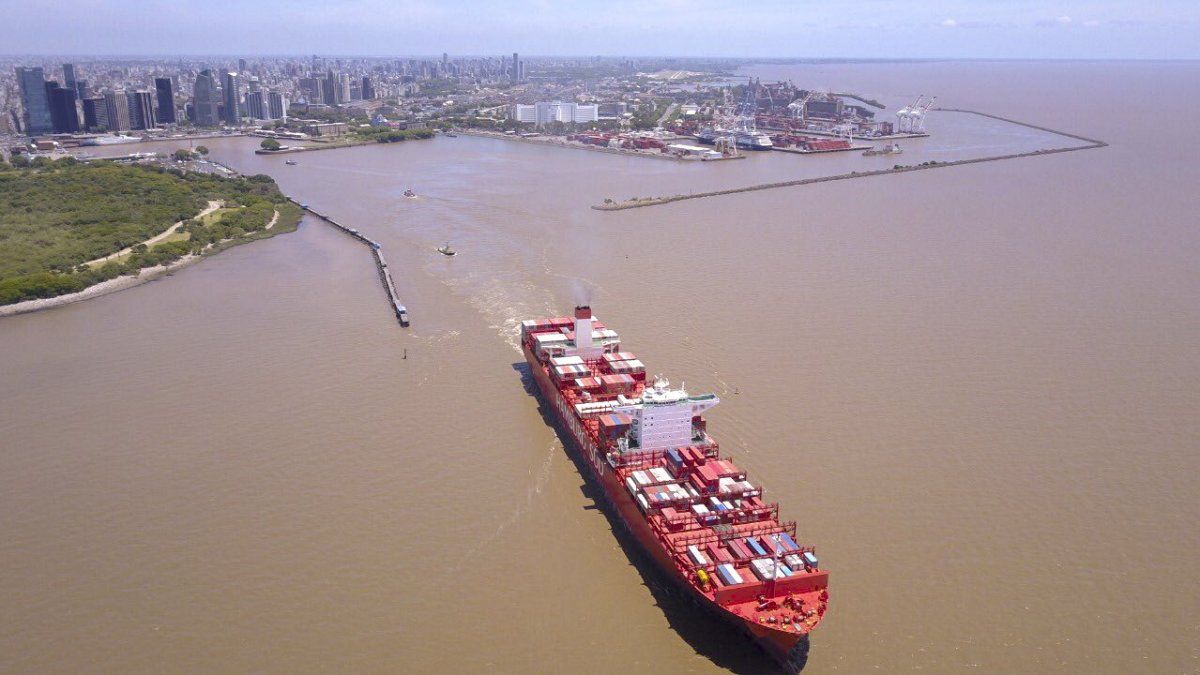The INDEC reported that exports totaled 7,407 million dollars, with a year-on-year decrease of 2.2%, and imports totaled 6,993 million dollars, which represented an increase of 18.8%.
In this way, three consecutive months of unfavorable results were broken, for which This result was influenced by the decision of the Ministry of Economy to establish the “soybean dollar” only for September, which allowed liquidation for almost US$8.2 billion.
The INDEC reported that if the prices of the same month of the previous year had prevailed, the trade balance would have shown a surplus of only US$284 million
This is due to the fact that the prices of exports rose 12% last month, above the Index of import values, which did so by 10.5%.
For all this, the country recorded a profit in the terms of trade of US$91 million.
But not only the prices of the products that Argentina buys or sells, Freight rates also became more expensive, as has been happening since the end of 2020, when the world was leaving the Covid 19 pandemic behind. In September, the unit value of international freight was 140.9 dollars per ton, 31.9% higher than in the same period of 2021 (US$ 106.8) and 174.1% higher than in September 2020 (US$ 51.4).
In September, the exchange with Mercosur, the main commercial partner, registered a negative balance of US$ 253 million.
Exports reached US$ 1,489 million and were 6.8% lower than those of the same month in 2021, mainly due to a decrease in sales of Fuel and Energy (CyE) and Primary Products (PP:).
82.4% of the bloc’s exports went to Brazil; 10.3%, to Uruguay; 6.3%, to Paraguay; and 1%, to Venezuela.
Trade with Mercosur represented 20.1% of exports and 24.9% of total imports, China was in second place, with 14.4% of exports and 23.1% of imports,
Trade with China recorded a negative balance of US$555 million. Exports totaled US$ 1,063 million, with a year-on-year increase of 47.4% mainly due to higher sales of PP.
60.2% of shipments concentrated on soybeans, excluded for sowing.
Imports totaled US$ 1,618 million and increased 16.7% mainly due to the increase in Parts and Accessories, with US$ 134 million, and Capital Goods for US$ 34 million, among others.
In the first nine months of the year, the commercial exchange showed a surplus of US$ 2,611 million, compared to US$ 12,340 million in January-September last year.
Imports grew 40% to total US$64,520 million, while exports advanced 15% to reach US$67,131 million.
Economy Minister Sergio Massa said that “politics has to give in and set an example of austerity, and businessmen also have to give up the benefits” they obtain from the state.
“We have to return to having twin surpluses” in the fiscal and commercial spheres, “along with a competitive exchange rate and the accumulation of reserves,” Massa said in a recorded video that was broadcast last Friday as part of the 58th. IDEA Colloquium.
Source: Ambito
David William is a talented author who has made a name for himself in the world of writing. He is a professional author who writes on a wide range of topics, from general interest to opinion news. David is currently working as a writer at 24 hours worlds where he brings his unique perspective and in-depth research to his articles, making them both informative and engaging.




